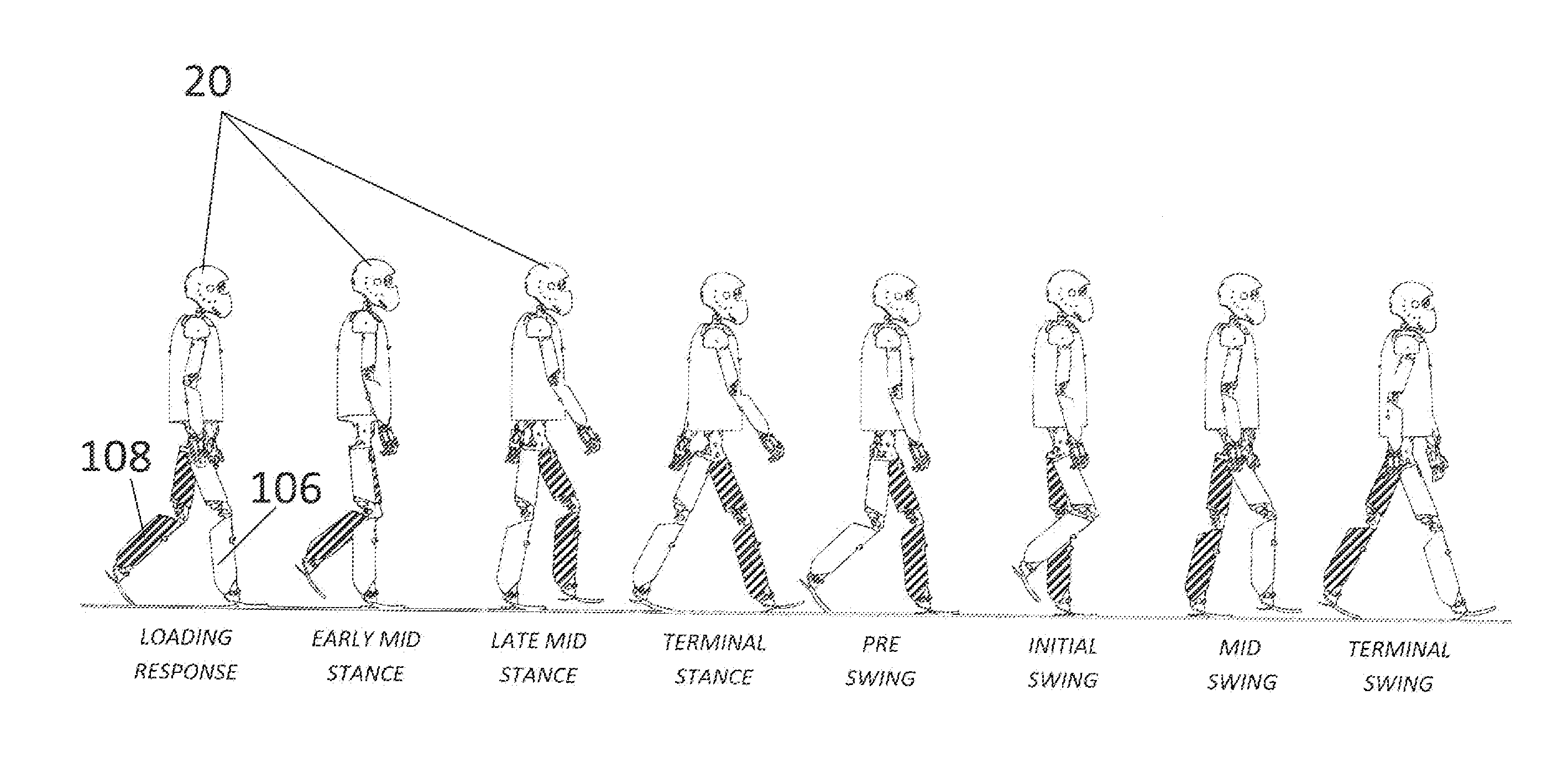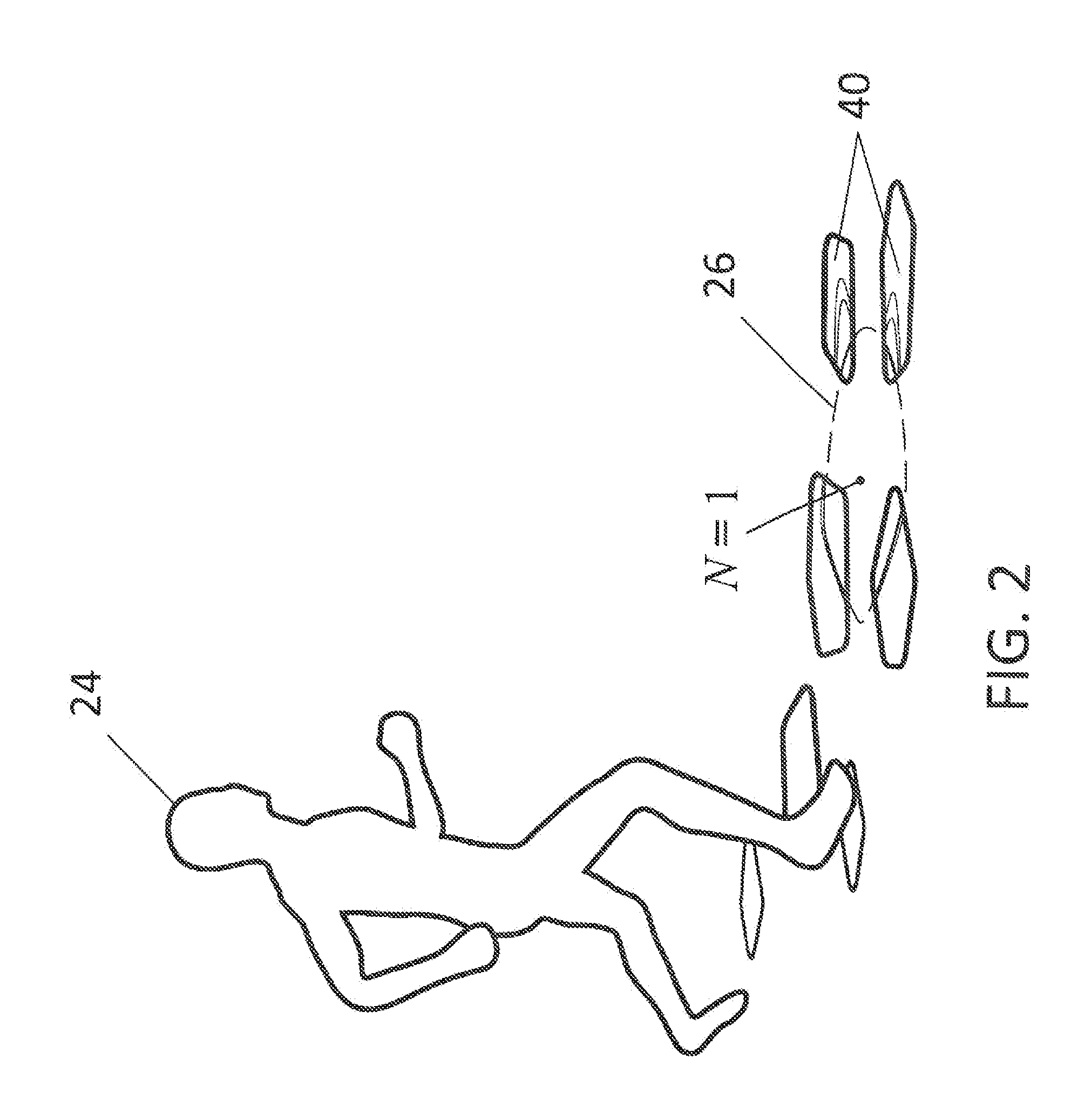Humanoid Robot that can Dynamically Walk with Limited Available Footholds in the Presence of Disturbances
a humanoid robot and dynamic technology, applied in the direction of vehicle position/course/altitude control, process and machine control, instruments, etc., to achieve the effect of robust and relatively simple balancing and walking mechanism
- Summary
- Abstract
- Description
- Claims
- Application Information
AI Technical Summary
Benefits of technology
Problems solved by technology
Method used
Image
Examples
Embodiment Construction
[0049]The present invention presents a simplified and robust mechanism for controlling locomotion in a multi-legged system by incorporating certain fundamental concepts regarding the operation of such systems. The first fundamental concept is “capturability.” A multi-legged system is said to be “capturable” if it is possible for the system to come to a balanced stop in one or more steps. If the number of required steps is defined as N, then “N-step capturability” is the ability of the legged system to come to a stop without falling by taking N or fewer steps. This ability is considered crucial to legged locomotion and is a useful, yet not overly restrictive criterion for stability.
[0050]Some simplified dynamic models serve to illustrate the advantages of the concept of capturability. FIG. 4 shows a graphical depiction of a linear inverted pendulum. Center of mass 84 is connected to telescoping leg 88. Telescoping leg 88 ends in point foot 86. Telescoping leg 88 is used to keep Cente...
PUM
 Login to View More
Login to View More Abstract
Description
Claims
Application Information
 Login to View More
Login to View More - R&D
- Intellectual Property
- Life Sciences
- Materials
- Tech Scout
- Unparalleled Data Quality
- Higher Quality Content
- 60% Fewer Hallucinations
Browse by: Latest US Patents, China's latest patents, Technical Efficacy Thesaurus, Application Domain, Technology Topic, Popular Technical Reports.
© 2025 PatSnap. All rights reserved.Legal|Privacy policy|Modern Slavery Act Transparency Statement|Sitemap|About US| Contact US: help@patsnap.com



